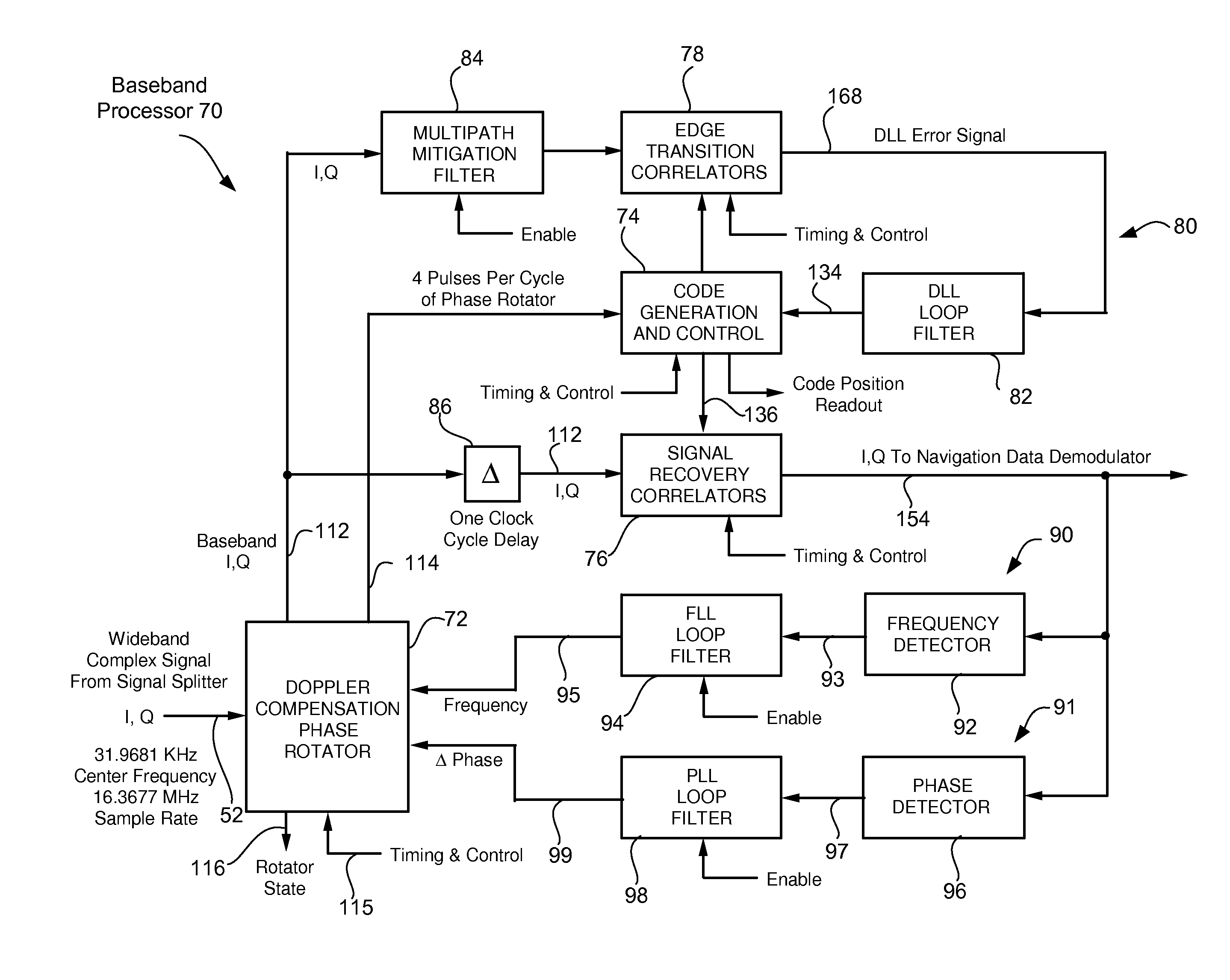Low cost, high performance gps/gnss receiver architecture
a receiver and low-cost technology, applied in the field of low-cost gps/gnss receivers, can solve the problems of shortening the time to first fix (ttff), affecting the accuracy of gps/gnss receivers, and reducing so as to improve the sensitivity of gps/gnss receivers and improve the accuracy of gps/
- Summary
- Abstract
- Description
- Claims
- Application Information
AI Technical Summary
Benefits of technology
Problems solved by technology
Method used
Image
Examples
Embodiment Construction
[0062]The present invention will now be described in detail with reference to a few preferred embodiments thereof as illustrated in the accompanying drawings. In the following description, numerous specific details are set forth in order to provide a thorough understanding of the present invention. It will be apparent, however, to one skilled in the art, that the present invention may be practiced without some or all of these specific details. In other instances, well known process steps and / or structures have not been described in detail in order to not unnecessarily obscure the present invention.
[0063]The present invention includes the following components in a GPS / GNSS receiver, which operate together to provide high performance at low cost: (1) RF / IF Section; (2) Signal Splitter; and (3) Baseband Processor, which are explained below in detail. The GPS / GNSS receiver also includes a satellite signal capturing section and a signal tracking section. The satellite signal capturing se...
PUM
 Login to View More
Login to View More Abstract
Description
Claims
Application Information
 Login to View More
Login to View More - R&D
- Intellectual Property
- Life Sciences
- Materials
- Tech Scout
- Unparalleled Data Quality
- Higher Quality Content
- 60% Fewer Hallucinations
Browse by: Latest US Patents, China's latest patents, Technical Efficacy Thesaurus, Application Domain, Technology Topic, Popular Technical Reports.
© 2025 PatSnap. All rights reserved.Legal|Privacy policy|Modern Slavery Act Transparency Statement|Sitemap|About US| Contact US: help@patsnap.com



